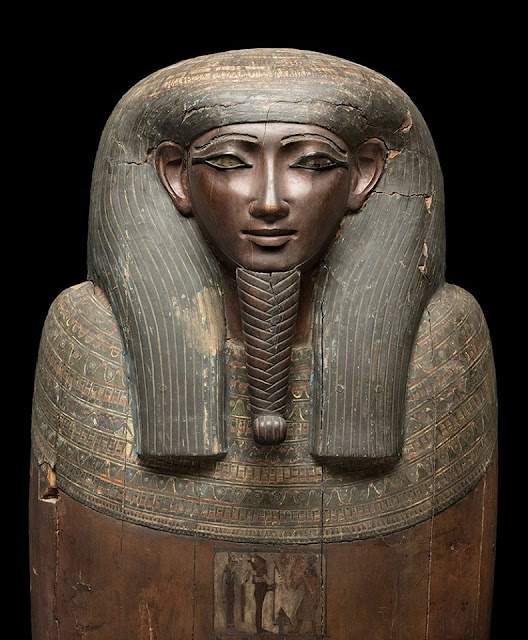Thebes sometime during the Late Period (circa 664-332 BCE). It is made of plastered and painted wood and was one of three coffins nested within one another that housed the mummified body of the deceased. This piece (ÄM 51) is now in the Neues Museum, Berlin, Germany. Photo: © Staatliche Museen Zu Berlin, Ägyptisches Museum und Papyrussammlung / Sandra Steiß
"The body container was... a physical entrance into the afterlife itself, a space that the Egyptians called the duat, believed to be inside the body of the sky goddess Nut, the mother of Osiris and the sun god... Placing the dead into the coffin interior was therefore akin to putting him or her onto a fast track to the parts of the duat where the Blessed Dead dwelled. From the perspective of the deceased inside the coffin, he or she was believed to be inside Nut... The coffin was, therefore, a kind of womb, which is reflected in the Old Kingdom word for sarcophagus mwt or "mother." In later periods, inner body containers were often called sukhet or "egg," equating the body container with this holder of new life..." Cooney, Kathlyn M., "Coffins, Cartonnage, and Sarcophagi," in Hartwig, Melinda K., ed., A Companion to Ancient Egyptian Art, John Wiley & Sons Ltd., Oxford, UK.



